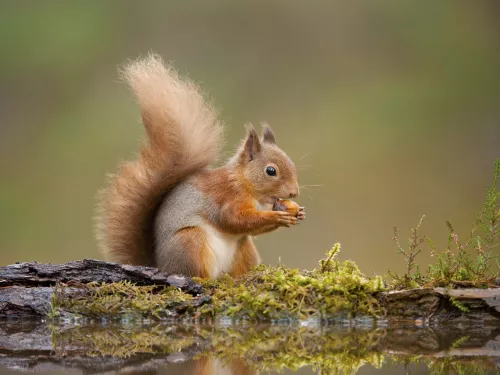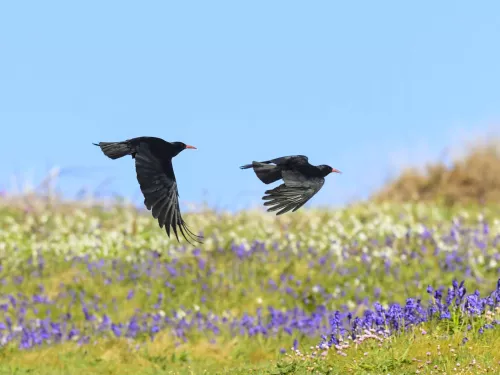
Red kite
Seeing a red kite soaring high in the sky is a true delight! Once a very rare bird, thanks to successful reintroduction projects these wonderful birds can now be seen in lots of places in the UK.

Seeing a red kite soaring high in the sky is a true delight! Once a very rare bird, thanks to successful reintroduction projects these wonderful birds can now be seen in lots of places in the UK.
The Red Mason Bee is a common, gingery bee that can be spotted nesting in the crumbling mortar of old walls. Encourage bees to nest in your garden by putting out a tin can full of short, hollow canes.

Red squirrels are native to the UK but are a lot rarer than their grey cousins. They live in a few special places across the UK thanks to reintroduction projects.
Red valerian was introduced in the 1600s from Europe, but is now naturalised in the UK. Its pinky-red flowers grow from old walls, roadside verges, railway cuttings and cliffs, and provide nectar for insects.
This distinctive bug is often seen basking on low-growing plants in spring and summer.

As the only crow with a red bill and red legs, the all-black chough is easy to identify. But it's harder to spot: there are only small, coastal populations in Scotland, Ireland, Wales, Cornwall and the Isle of Man.
These distinctive beetles are often found around dead birds and small mammals.
The streamlined red-breasted merganser is a handsome bird and a great fisher - its long, serrated bill helps it to catch and hold its slippery fish prey. It is most commonly spotted around the coast in winter.
This striking duck was introduced to the UK and is now established as a breeding bird in England.
The Red-eyed damselfly is a small, but robust, damselfly of canals, ponds, lakes and slow-flowing rivers. As its name suggests, it has bright blood-red eyes, but a mostly black body.
A bright red beetle, with black legs and knobbly antennae, the red-headed cardinal beetle lives up to its name. Look for it in woodland, along hedgerows and in parks and gardens over summer.
A plump gamebird, the red-legged partridge is an introduced species that seems to have settled here with little problem. It can be spotted in its favoured open scrub and farmland habitats.